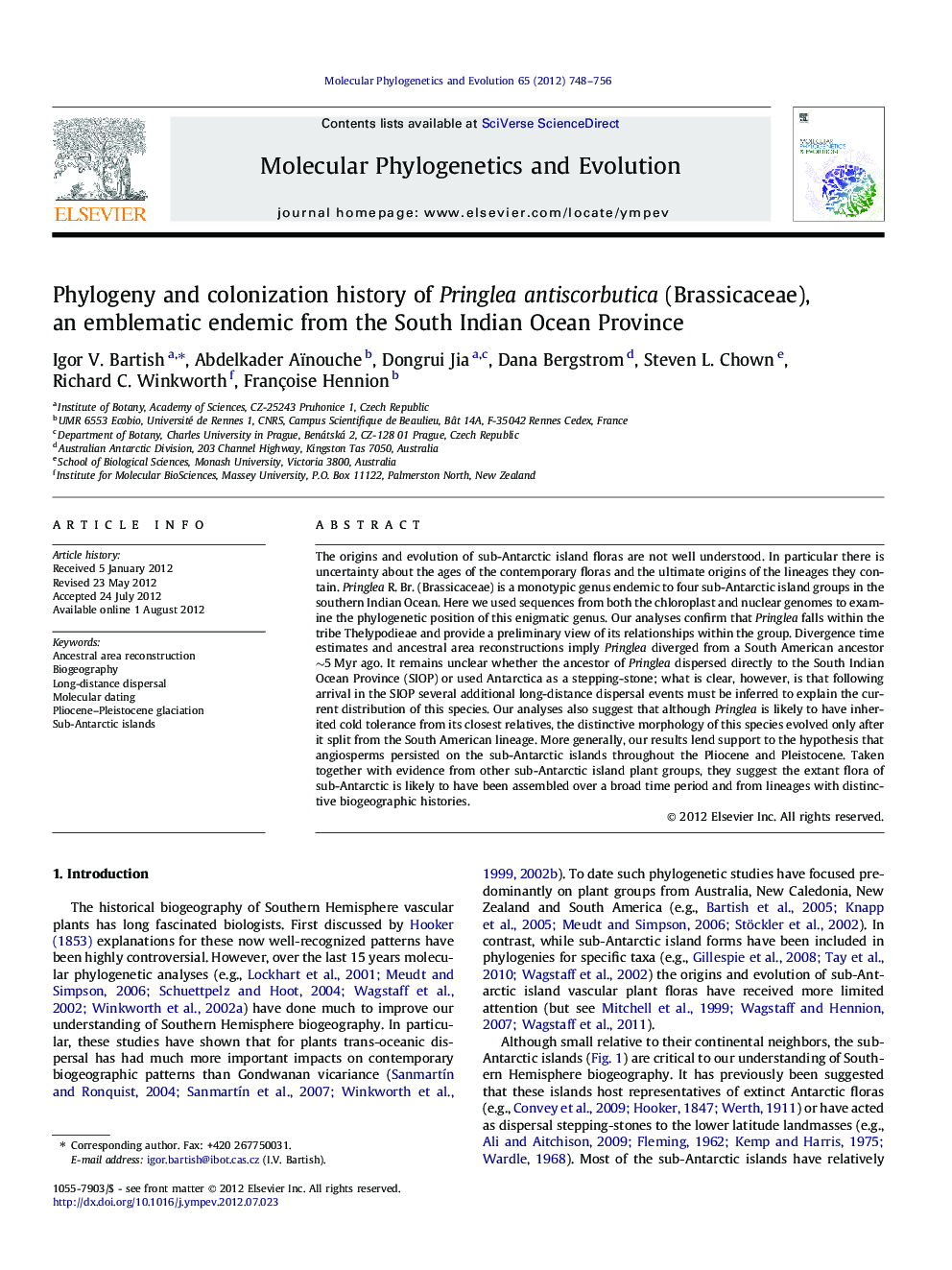| Article ID | Journal | Published Year | Pages | File Type |
|---|---|---|---|---|
| 5919923 | Molecular Phylogenetics and Evolution | 2012 | 9 Pages |
The origins and evolution of sub-Antarctic island floras are not well understood. In particular there is uncertainty about the ages of the contemporary floras and the ultimate origins of the lineages they contain. Pringlea R. Br. (Brassicaceae) is a monotypic genus endemic to four sub-Antarctic island groups in the southern Indian Ocean. Here we used sequences from both the chloroplast and nuclear genomes to examine the phylogenetic position of this enigmatic genus. Our analyses confirm that Pringlea falls within the tribe Thelypodieae and provide a preliminary view of its relationships within the group. Divergence time estimates and ancestral area reconstructions imply Pringlea diverged from a South American ancestor â¼5Â Myr ago. It remains unclear whether the ancestor of Pringlea dispersed directly to the South Indian Ocean Province (SIOP) or used Antarctica as a stepping-stone; what is clear, however, is that following arrival in the SIOP several additional long-distance dispersal events must be inferred to explain the current distribution of this species. Our analyses also suggest that although Pringlea is likely to have inherited cold tolerance from its closest relatives, the distinctive morphology of this species evolved only after it split from the South American lineage. More generally, our results lend support to the hypothesis that angiosperms persisted on the sub-Antarctic islands throughout the Pliocene and Pleistocene. Taken together with evidence from other sub-Antarctic island plant groups, they suggest the extant flora of sub-Antarctic is likely to have been assembled over a broad time period and from lineages with distinctive biogeographic histories.
Graphical abstractDownload full-size imageHighlights⺠Pringlea is native to four southern Indian Ocean island groups. ⺠Pringlea diverged from a South American ancestor in the late Miocene-Pliocene. ⺠Pringlea likely arrived in these islands adapted to cold and wet climates. ⺠The morphology of Pringlea appears to have evolved rapidly following arrival. ⺠Our results imply plants persisted in the sub-Antarctic throughout the Pleistocene.
